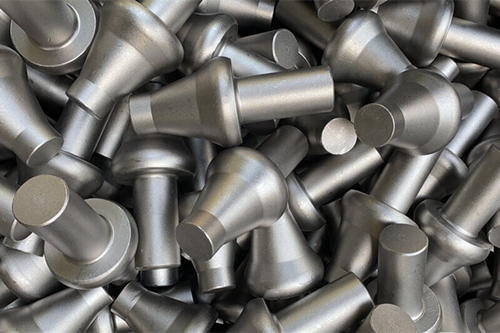What Is Cold Forging? Newbies Best Guide 2023
what is cold forging
Cold forging is a manufacturing process that involves shaping metal components at room temperature using a die and significant compressive forces. Unlike hot forging, which requires heating the metal above its recrystallization temperature, cold forging offers distinct advantages in terms of efficiency, cost-effectiveness, and product quality. In this article, we will explore the steps involved in the cold forging process and highlight its numerous advantages.
Steps in the Cold Forging Process:
Material Selection:
The first step in cold forging is selecting an appropriate material. Commonly used metals for cold forging include aluminum, copper, steel, and their alloys. The chosen material should possess excellent plasticity, high strength, and good resistance to deformation.
Billet Preparation:
The selected metal is obtained in the form of cylindrical or rectangular bars called billets. These billets are cut to the required length for the forging process. It is crucial to ensure the billet’s diameter or cross-sectional area is slightly larger than the finished part’s dimensions to accommodate material displacement during deformation.
Lubrication:
Lubrication plays a vital role in cold forging. Applying lubricants between the die and the billet reduces friction, improves metal flow, and prevents surface defects. Common lubricants include graphite, oil-based coatings, and solid film lubricants.
Die Design:
The die design is a critical aspect of the cold forging process. The die consists of two halves, an upper and a lower, with cavities that shape the billet into the desired form. The die design should account for material flow, draft angles, and part ejection. Computer-aided design (CAD) and computer-aided manufacturing (CAM) tools are commonly employed to create precise and intricate die designs.
Cold Forging Operation:
The actual cold forging operation begins by placing the lubricated billet into the lower die cavity. The upper die then descends with immense force, exerting pressure on the billet. The metal undergoes plastic deformation and takes the shape of the die cavity, resulting in the desired component.
Finishing Operations:
After the cold forging process, the component may require additional finishing operations, such as trimming, punching, threading, or machining, to achieve the final specifications. These operations help remove excess material, refine surface finish, and create any necessary features.
Visit https://www.coldforgingchina.com for the best forging products.
